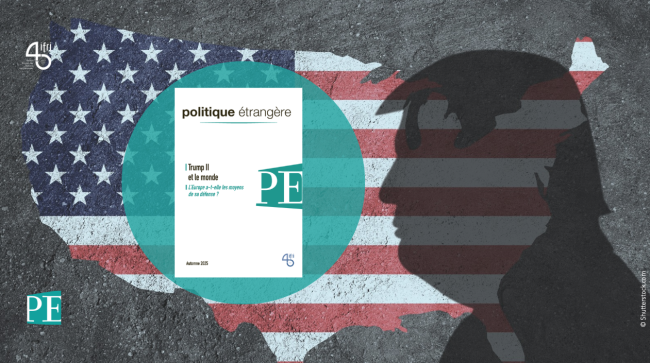American Student Loans: Debt, Reform, and the True Cost of Higher Education

This piece is the first in a series of four Chroniques américaines on education in the United States, published this week.
American students graduating in 2014 from their four years at university have recently been given the dubious honor of being named the most indebted class in history. [1] Paired with this news is the fact that student loans in the United States now total more than one trillion USD (736.2 billion euros), exceeding American credit card debt, with over 40 million students in obligation to creditors. In the wake of the release of these numbers, President Obama has recently announced his plan to massively expand the Pay As You Earn (PAYE) program, which ties a graduate’s repayment of student loans to a percentage of their income.
American universities are historically split into public, state-run universities which receive public funding, and private universities which do not. Public universities characteristically charge much lower tuitions for people who live in the same state, averaging around $6.000 per year nationally. However, out-of-state students are charged much higher prices, at an average cost of $17.000 per year. Though high, these costs pale in comparison to the costs of private universities, which compose the majority of high-level American institutions, where costs averaged just over $32.000 per year in 2011. [2] Of schools ranked in the top twenty US universities in 2014, only two (Rice University and University of California - Berkeley) charge less than $40.000 per year in tuition and fees. [3] In addition, American colleges charge separately for food and housing, adding to the already immense cost of a four-year education – for example, Cornell recommends budgeting an additional $15.000 per year (beyond tuition and fees) for housing, food, books, and other expenses. [4] With these fees included, many top-level American universities can cost over $60.000 per year.
Ballooning Costs
Since 1985, American colleges have seen a nearly 500% increase in total fees associated with university attendance. [5] A number of factors have led to these ballooning costs. The rising necessity of a college degree for one’s career and the introduction of federal grants and loans have both allowed colleges to charge their students higher prices. The increased demand means students are willing to pay more, and the federal aid means that students who previously would have been unable to pay for college can now obtain enough aid for even massively increased tuitions. In addition, a problematic relationship now exists between need-based scholarships, which benefit underprivileged students, and the subsequent tuition increases necessary for more advantaged students to subsidize these costs. As tuition increases, more students need scholarships, necessitating further tuition increases as more subsidization is needed. [6] A harder-to-quantify, but still relevant, factor in tuition increases is the “winner-take-all” mentality that has surrounded American universities. Every university wants the very best students. Each year, the top few percent of students will, barring individual circumstances, always pick the university with the best reputation, ranking, facilities, and material support. This has led to an educational “arms race,” leading colleges to spend millions on their infrastructure, on hiring the most famous (which does not necessarily equate to best) professors, and on improving their standings in national rankings. The resultant increase in yearly operating costs has naturally led to an upwards surge for student costs. As universities continue battling for ranking spots, which are partially determined by factors like “amount spent per student” and “average faculty compensation,” costs can only continue to increase.
By 2030, average total tuition costs for four years (not including room and board) are projected to exceed $350.000. [7] At that rate, assuming stable savings investments, [8] a person hoping to put one child through college would need to save over $18.000 per year for 18 years just to pay four years of tuition. Considering that the US median income is just over $51.000 per household per year, [9] and that the estimated minimum living wage (necessary to cover basic costs of living) for an adult supporting a child is nearly $37.000, [10] that leaves a $4.000 annual gap in the necessary savings, even without contributing towards one’s own retirement. With the addition of existing student loan debt or with multiple children, the burden only becomes higher.
Affording an Education
With the already immense cost of university tuition rising at a pace that outstrips cost-of-living inflation fourfold, [11] the only option for the vast majority of students is to turn to financial assistance. This can come in the form of grants from the university, the federal government, or private charities, or by way of loans from the US government or private institutions. Unlike in previous generations, it is no longer possible for students to put themselves through school by working a part-time job. Whereas in 1980 a student could pay full tuition, fees, and even have extra spending money simply by working 16 hours a week year round at minimum wage, a student in 2014 would optimistically have to work 34 hours a week in an equivalent job, assuming that student received the maximum allowable federal “Pell” grant, and that he was attending an in-state public school. In short, a student seeking to avoid loans, and attending a far cheaper than average school while receiving governmental aid, would have to work nearly a full-time job year round, in addition to his schoolwork, just to pay tuition.
As a result, as of 2011, the percentage of students receiving financial aid of any kind had surpassed 85%. [12] Private grants and scholarships from universities help defray educational expenditures for an enormous number of American students, and usually come from a university’s endowment. Many high-level US universities have investments and holdings worth billions of dollars, and can therefore afford to subsidize the cost of education for all admitted students who demonstrate need; Harvard University, the wealthiest educational institution in the world, currently holds an endowment worth over 30 billion dollars. However, in the vast majority of cases (notable exceptions include Harvard and Princeton, who have a ‘no-loan’ guarantee, ensuring that all students graduate debt-free), students seeking financial assistance have to take out a federally-guaranteed student loan in addition to any grants. These loans do not accrue interest until six months after the student has finished enrollment in university, and the government offers special benefits for people entering certain fields: certain teachers or government workers are entitled to loan forgiveness after a period of steady loan repayment, regardless of whether or not the debt has been fully repaid. Additionally, federal loans can be discharged as a result of disability or death. However, these loans are heavily limited in size, meaning that students are frequently left with a sizable yearly tuition even after grants and loans.
When seeking to bridge a gap between provided financial aid and available personal payment, students can turn to private loans. Private loans, provided by banks and financial institutions, do not have a limit, and accrue interest from the moment they are first taken. Typically, they are also tied to a relatively high variable interest rate. By itself, this wouldn’t be impossibly problematic: education’s benefits for one’s salary usually offset the cost. However, some students, as a result of choosing less lucrative professions such as social work or faced with unemployment, are unable to pay off these debts within their allotted timeframe, forcing them to eventually face a choice between a crippling financial struggle and bankruptcy. Bankruptcy is intended as a one-time opportunity for a fresh start, to prevent any person’s life from being consumed wholly by debt. Under American law, almost all debts are discharged in bankruptcy unless there has been serious misconduct by the debtor. Student loans, however, require a demonstration of ‘undue hardship’ to be discharged, an exceedingly rigorous legal standard. Debtors facing this legal requirement are unlikely to win without legal counsel, which can be prohibitively expensive, especially for someone undergoing bankruptcy proceedings. Unlike with federal loans, the loan repayment responsibility for a private loan can transfer, under certain circumstances, to family members in the event of a disability, or even after death. [13] Without any way for students to discharge a debt, even under hardship, disability, or when faced with bankruptcy, private creditors have no motivation to lower interest rates or to provide any sort of deferment option for debtors. Defaulting on a student loan can result in the loss of one’s professional license and severe damage to one’s ability to take out future loans, [14] making it hard to get a job or secure another line of credit.
In addition to the negative effects on the former students themselves, student loan debt is having additional consequences for the broader economy: as a result of the massive debt at high interest rates, and the damage that can be done to young peoples’ already-fragile credit scores, college graduates are greatly delaying other major purchases, such as houses and cars. [15] The massive increase of debt-to-income ratios for the current generation of graduate debtors means that many young people with incomes well above the median income for the US are unable to obtain bank loans or mortgages, or are only able to obtain loans with a very high interest rate, furthering their financial burden. [16] More than 11% of students are delinquent on their debts, and more still are stuck paying off their debts until well into their 30s. In attempting to pay off their debt as quickly as possible, graduates cut corners, take on extra jobs, and vastly reduce their participation in the consumer economy. [17] Beyond damaging the economic participation of an entire generation, it also delays the readiness or willingness of the newer generation to start families, [18] again demonstrating the far-reaching and long-lasting negative effects of what has become a de facto requirement for most Americans to access higher education.
A Movement for Reform
A recent movement to reform the way student debt is handled is under way, but progress has been made in certain areas, with proposals in the works in others. President Obama recently announced an expansion of the Pay As You Earn program, which limits the amount students are required to pay to a percentage of their monthly income, rather than to a percentage of their total debt. In addition, the debtor can have the balance of his debt forgiven after twenty years of percentage-based payment, or after ten years if the debtor works for the government or for a charity. [19] However, this program applies only to federal student loans, which already have many more protections for debtors than private loans. Moreover, this plan will save the average student less than $10 a month, [20] meaning that the reduction in payment is hardly enough to make a significant difference for all but the most indebted students. On another front, a number of Democratic senators have introduced a bill, the “Fairness for Struggling Students Act of 2013,” which aims to remove the bankruptcy exception for student loans, allowing graduates in dire financial straits to discharge loan debt like any other debt. [21] This bill is currently in a congressional committee to determine if it will be voted upon. However, recently, a bill that would allow students to refinance their loans – both federal and private – at current, lower rates failed to pass the Senate due solely to Republican opposition, [22] meaning that, barring an unusual showing of bipartisanship before the mid-term elections, it is unlikely for any substantial loan-reform bill to pass in the near future.
In Conclusion
College costs have risen at nearly three times the rate of inflation for the past 25 years, meaning that fewer and fewer families are able to afford paying for their children’s education, and that students paying their own way through college is almost unheard of. Families that begin saving for college before they have had children may still find it difficult to pay for their children’s education 20 years later. Students who take out large loans are fortunate if they can afford to buy a house or secure a line of credit by the time they’re 30. Education is one of the most basic necessities for a productive society – equality of education contributes to equality of opportunity, and a chance for all citizens to realize the oft-promised “American Dream”: that if you work hard, and have ability, you will be able to succeed both financially and personally. For the current generation, university tuition is the greatest existing barrier to that dream.
[1] http://blogs.wsj.com/numbersguy/congatulations-to-class-of-2014-the-most-indebted-ever-1368/
[2] http://www.statisticbrain.com/average-cost-of-college-tuition/
[3] http://colleges.usnews.rankingsandreviews.com/best-colleges/rankings/national-universities
[4] http://www.topuniversities.com/student-info/student-finance/how-much-does-it-cost-study-us
[5] http://www.bloomberg.com/news/2013-08-26/college-costs-surge-500-in-u-s-since-1985-chart-of-the-day.html
[6] http://collegesavings.about.com/od/understandingcollegecosts/a/risingcosts.htm
[7] http://www.statisticbrain.com/average-cost-of-college-tuition/
[8] Assuming returns of 10% http://paulmerriman.com/10-reasons-brokers-dont-like-index-funds/
[9] http://www.census.gov/prod/2013pubs/acsbr12-02.pdf
[10] http://livingwage.mit.edu/states/31 Nebraska was used as falls within $100 of the national median income
[11] http://satyagraha.wordpress.com/2009/07/14/college-tuition-hyperinflation/
[12] http://nces.ed.gov/fastfacts/display.asp?id=31
[13] http://online.wsj.com/news/articles/SB10001424052748704741904575409510529783860
[14] http://www.huffingtonpost.com/kyle-mccarthy/10-fun-facts-about-student-loan-debt_b_4639044.html
[15] http://www.policymic.com/articles/89487/new-data-shows-that-america-s-student-debt-crisis-isn-t-just-bad-for-students
[16] http://younginvincibles.org/wp-content/uploads/2012/08/Denied-The-Impact-of-Student-Debt-on-the-Ability-to-Buy-a-House-8.14.12.pdf
[17] http://time.com/10577/student-loans-are-ruining-your-life-now-theyre-ruining-the-economy-too/
[18] http://www.businessweek.com/articles/2012-03-28/will-you-marry-me-after-i-pay-off-my-student-loans
[19] http://www.npr.org/blogs/ed/2014/06/09/320351501/the-one-thing-obama-didn-t-say-about-student-loan-repayment?utm_medium=facebook&utm_source=npr&utm_campaign=nprnews&utm_content=06102014
[20] http://www.theatlantic.com/business/archive/2011/10/obamas-student-loan-order-saves-the-average-grad-less-than-10-a-month/247411/
[21] https://www.govtrack.us/congress/bills/113/s114/text
[22] http://thehill.com/blogs/floor-action/senate/208970-republicans-block-student-loan-bill

Available in:
Regions and themes
Share
Related centers and programs
Discover our other research centers and programsFind out more
Discover all our analysesBrazil One Year Away from the October 2026 General Elections
Brazil’s general elections will be held on October 4, 2026, to elect the president, vice-president, members of the National Congress, governors, deputy governors and state legislative assemblies. For the presidential and gubernatorial elections, a second round will be held on October 25 if no candidate obtains a majority of the votes in the first round.
Trump II: The Clash of Ideologies
The second Trump administration brings together a number of very different, even opposing, ideologies: far-right populism, the reactionary Christian right, paleolibertarianism, and technolibertarianism. The most visible measures taken since Donald Trump's return to the White House have been populist in nature, with the president's authority strengthened, checks and balances weakened, a form of identity politics embraced, and economic nationalism implemented.
Water in Mexico: an Emergency that Will Wait
Access to water is already and will become increasingly problematic for Mexican economic actors due to the progressive scarcity of the resource resulting from climate change, a geographical distribution that does not coincide with that of the population or economic activity, and management that has so far been far too lax.
Donald Trump v. the States: the Case of New York
While the disruptive policies of the second Trump administration are being implemented at the federal level and on the international stage, they are also being felt in the federal states and major cities across the country. In the spring of 2025, several cases involving the state and city of New York demonstrate that the president’s attacks on environmental protection, the separation of powers, freedom of speech, etc., are also being carried out at the local level.









